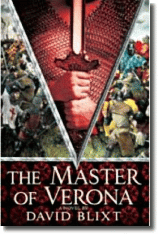 Here he shares some ideas about the cast for a cinematic adaptation of his new novel, Rupture:
Here he shares some ideas about the cast for a cinematic adaptation of his new novel, Rupture:Rupture, my novel of medical suspense, introduces surgeon Eli Branch. While investigating the suspicious death of one of his patients, Eli uncovers an elaborate web of lies spun by his late father, a longtime professor of anatomy at Mid-South Medical College in Memphis. Instead of finding answers, Eli finds more questions–and more victims, each meeting a sudden, violent end.Read more about Rupture at the official website or at the publisher's website.
Eli joins forensic pathologist Meg Daily to find a common thread among the victims. As they piece together the chilling puzzle, Eli and Meg plunge headfirst into the world of deadly medicine–a world way too close to home. Trapped in the paradox of ending one life to save another, Eli finds that in this life-or-death race against time, one false step could be fatal.
For the main character, burgeoning surgeon Eli Branch, I would choose a young Harrison Ford, without question. Since that’s not happening, I turn to Jude Law, or an inquisitive John Cusack. Maybe a serious Jay Mohr. It both thrills and troubles me to consider what Robert Downey, Jr. could do with the role. Jake Gyllenhaal could take this part and run with it. Rising to the top of the pack, however, is Matt Damon.
For the heroine, pathologist Meg Daily, her part is fun to think about, again and again. Cate Blanchett would be sumptuous, as would Juliette Binoche. Then there’s Minnie Driver. Driver and Damon might recreate their relationship in Good Will Hunting. Could be a good thing, but not right for this story. I’d go with Laura Linney.
I would love to see Telly Savalas portraying Lipsky, the gruff police detective. But Harvey Keitel could blow it away.
Henry Branch, Eli’s brother, would be a complex role. Better ask Ed Harris for that one.
For Fisher, the chairman of surgery, bring on Jon Voight. For Harvey Stone, powerful head of the biomedical device company, Donald Sutherland would rock. But, I love Bill Nighy in just about anything. And for Alex Zaboyan, Stone’s second in command, a skeptical Alan Rickman.
For Tsarina, the temptress-turned-villain, a role-reversed Allison Janney would be sublime.
And lastly, there’s Prine, a relatively minor character with major consequences for the ending. To be played by Scatman Crothers, from The Shining. I could “see” his face every time I wrote this character.
--Marshal Zeringue














